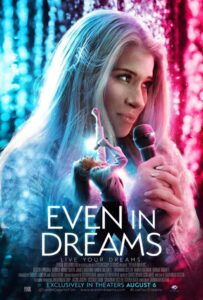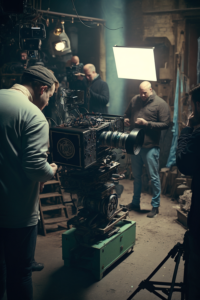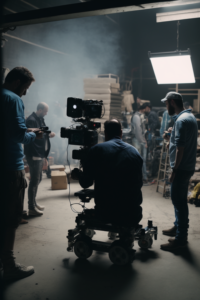TV & MOVIES
Perspectives: A Debate on the Role of Film Adaptations in Telling Real-Life Stories
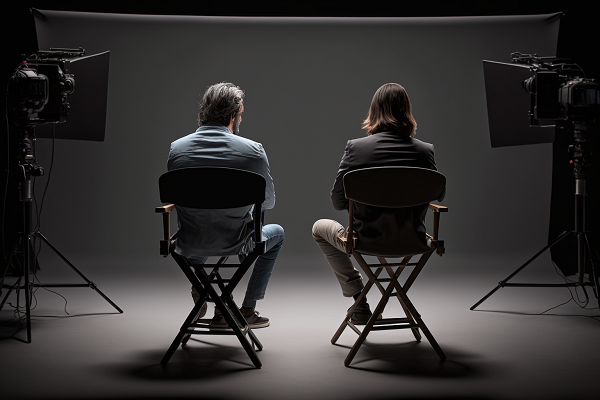
Intersection of Literature and Cinema Series : Perspectives: A Debate on the Role of Film Adaptations in Telling Real-Life Stories
Two hypothetical film columnists who have differing views on the relationship between Film adaptations of memoirs and autobiographies in films
Film adaptations of memoirs and autobiographies have become increasingly popular in recent years, with Hollywood turning to real-life stories for inspiration. While these adaptations can be powerful and moving, they also raise important questions about the responsibility of filmmakers to accurately represent the lives of real people and to avoid exploiting their experiences for commercial gain.
In this discussion between two seasoned columnists at Studio Carry On Harry, David Lee and Rachel Smith, we explore the opposing viewpoints on the topic of film adaptations of memoirs and autobiographies. David argues that these adaptations are often too sentimental and lack depth, while Rachel believes that they offer a unique opportunity to bring these stories to life and to engage a wider audience.
Through their discussion, David and Rachel touch on a variety of important issues, including the potential for filmmakers to take liberties with the source material, the danger of turning real people into caricatures, and the commercialization of real people’s stories. While they don’t always agree, their conversation highlights the complex and nuanced nature of film adaptations of memoirs and autobiographies, and offers readers plenty to think about when considering the role of Hollywood in telling real-life stories.
Here is a casual discussion among both columnists and Press Editor Harry Johal
David Lee: “I think film adaptations of memoirs and autobiographies are often too sentimental and lack depth. They tend to focus on the most dramatic aspects of the story, leaving out the nuance and complexity of real life.”
Rachel Smith: “I see where you’re coming from, David, but I think film adaptations of memoirs and autobiographies can be incredibly powerful. They offer a window into the lives of real people, and can help us understand the human experience in a deeper way.”
David Lee: “But don’t you think that filmmakers often take liberties with the source material in order to make it more cinematic? They may change details or compress timelines in order to create a more dramatic story, which can ultimately undermine the authenticity of the original memoir or autobiography.”
Rachel Smith: “I think it’s true that filmmakers need to be careful not to stray too far from the source material, but I also think they have a responsibility to create a compelling story that will engage audiences. If done correctly, a film adaptation can bring a memoir or autobiography to life in a way that a book simply can’t.”
David Lee: “But what about the danger of turning real people into caricatures? Filmmakers may be tempted to simplify the characters or to portray them in overly sympathetic or unsympathetic ways in order to create a clear hero or villain for the audience to root for.”
Rachel Smith: “I agree that this can be a danger, but I also think that a skilled filmmaker can avoid this trap. By taking the time to truly understand the characters and their motivations, and by working closely with the author or subject of the memoir or autobiography, the filmmakers can create a nuanced and authentic portrayal of real people.”
David Lee: “Okay, I see your point. But what about the commercialization of real people’s stories? Isn’t there something inherently exploitative about turning someone’s life story into a Hollywood blockbuster?”
Rachel Smith: “I think that’s a valid concern, but I also think that there are ways to mitigate this issue. For example, the filmmakers could donate a portion of the profits to a related charity or cause, or they could work with the author or subject to ensure that their story is being told in a respectful and responsible way.”
David Lee: “I guess that’s true. But I still worry about the potential for Hollywood to take advantage of real people’s experiences for their own gain.”
Rachel Smith: “I understand your concern, David, but I also think it’s important to remember that filmmaking is an art form, and that it can be a powerful way to tell important stories. Ultimately, it’s up to the filmmakers to approach these adaptations with care and respect, and to do justice to the complexity and richness of real people’s lives.”
Feedback and Suggestions:
Harry Johal Editor of this group discussion ” I appreciate the thought-provoking discussion between David and Rachel. I think it’s important to consider both the potential pitfalls and the potential power of film adaptations of memoirs and autobiographies.
I agree with David that filmmakers need to be careful not to simplify or exploit the real people whose stories they are adapting, and to stay true to the authenticity of the source material. However, I also appreciate Rachel’s perspective that film adaptations can offer a unique and powerful way to bring these stories to life and to engage a wider audience.
One suggestion I have for both writers is to consider the role of the audience in the adaptation process. While it’s important for the filmmakers to stay true to the essence of the story and the voice of the author or subject, they also need to consider how the story will be received by a wider audience.
Overall, I think this discussion has highlighted the complex and nuanced nature of film adaptations of memoirs and autobiographies, and has given me a lot to think”
TV & MOVIES
The Rise of OTT as the New Box Office

The Rise of OTT as the New Box Office
Once viewed as an alternative platform for offbeat cinema, OTT streaming has now become the new box office. Services like Netflix, Amazon Prime Video, Disney+ Hotstar, and JioCinema have blurred the lines between traditional film releases and digital premieres. Films now transition from theatre to streaming in record time, capitalizing on binge-hungry audiences. For stars, producers, and even entertainment journalists, success metrics have changed — viewership minutes are replacing weekend grosses. The result: OTT sits at the center of India’s entertainment economy, steering ad spends, influencing production budgets, and shaping the stories greenlit each quarter.
Entertainment News in the Age of Instant Streaming
In the digital ecosystem, entertainment journalism has transformed from the red carpet to the real-time feed. Every Friday now brings not just a theatrical release but multiple digital premieres across languages. Reporters have pivoted from set visits to decoding content strategy and from star gossip to viewership data. The new buzzwords: streaming engagement, AI-driven recommendations, and cross-platform visibility. Newsrooms like LiveNewsVault Entertainment and partners at CarryOnHarry now run OTT review dashboards, instant alerts, and trend explainers as core products.
Regional Powerhouses Take the Lead
India’s OTT revolution is inherently multilingual. Regional industries — Tamil, Telugu, Malayalam, Bengali, and Marathi — are not secondary players but growth engines. Breakout series and films prove that strong storytelling transcends language; national audiences discover talent via dubs, subs, and algorithmic curation. As fame democratizes, coverage widens: interviews and reviews from Kochi to Kolkata now trend pan-India within hours.
From Red Carpets to Reels: Celebrity PR Gets a Digital Makeover
Public relations and celebrity branding have undergone a dramatic shift. Actors cultivate fan engagement through behind-the-scenes reels, live Q&As, and platform-native collaborations. Reporters have become hybrid creators — part journalist, part analyst. Innovative campaigns (password-gated “secret reels,” ARG-style teasers, fan-first premieres) show how marketing has evolved for the scroll era: faster, smarter, and multimedia-first.
The Future: Where Algorithms Meet Art
As AI-driven curation becomes integral to discovery, the future of entertainment news is personalization. Editors increasingly collaborate with analytics to predict which categories — crime thriller, social drama, or period biopic — will surge. Independent desks leverage similar tools to deliver hyper-personalized reviews, streaming alerts, and creator spotlights tailored to micro-audiences. The story no longer ends at the screen; it continues in how we cover the screen.
Conclusion: The Digital Stage Expands
OTT has reinvented both entertainment and journalism. What used to be a Friday column is now a seven-day newsroom linking creators, audiences, and platforms through one digital thread. The future of entertainment news is streaming-first, global-minded, and endlessly connected. The screens may be smaller — the stories are larger than ever.
TV & MOVIES
Bollywood’s British Leap: Cross‑Border Filming and the New Cinematic Frontier
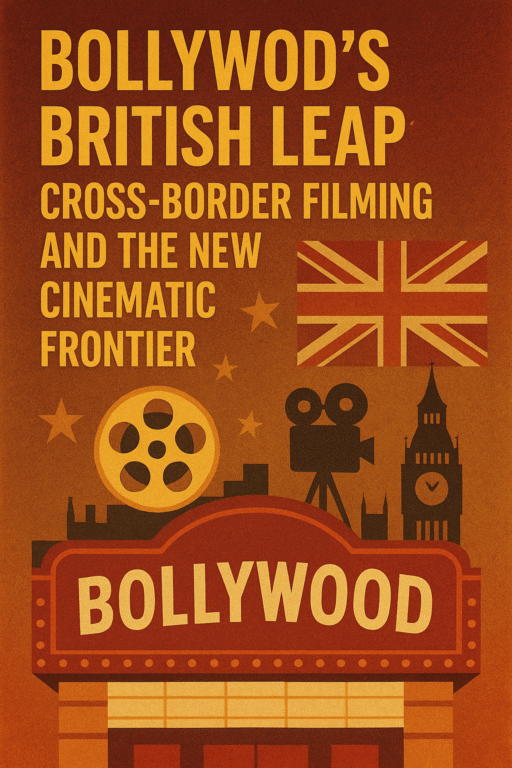
Bollywood’s British Leap: Cross‑Border Filming and the New Cinematic Frontier
Behind this move lie incentives, economic strategy, and symbolic ambition. The question now: can Bollywood transplant its cinematic heart without losing its cultural soul?
The announcement came via the corridors of power: British Prime Minister Keir Starmer revealed during his India visit that three Bollywood productions will be made in Britain from early 2026.
Central to the pact is Yash Raj Films, which had paused major UK shoots for eight years, now returning as the anchor for this cross‑border experiment.
Expected to generate around 3,000 jobs, the deal is as much diplomatic optics as industrial infrastructure.For Bollywood observers, it is a litmus test: can Indian storytelling adapt to foreign soil without feeling foreign?
The Vanguard: Yash Raj Leads the Charge
Yash Raj Films (YRF), long a stalwart of big‑scale Hindi cinema, is the first name attached to this UK dream.With its track record of lavish musicals, romance, and action — from Dilwale Dulhania Le Jayenge to Pathaan — YRF carries both brand capital and creative weight.Their reentry into Britain marks more than nostalgia: it signals a strategic pivot toward outward expansion.
But leading this frontier is no easy role. They will need to balance spectacle and intimacy, and reconcile Indian aesthetics with British logistical realities.
Incentives, Co‑Productions & Tax Mechanics
The financial architecture is critical. As part of the agreement, Indian and UK bodies will pursue co‑production treaties, resource sharing accords, and reciprocal benefits.UK’s creative industries already contribute around £12 billion annually and support ~90,000 jobs — the British case is that international shoots strengthen local ecosystems.Rebates, studio partnerships (e.g. Pinewood, Elstree) and infrastructure support are expected to sweeten the deal.But the devil is in execution: permissions, union rules, import logistics, film quotas, and cross‑border revenue sharing could complicate creative freedom.
Opportunities (and Tensions) for UK Crews & Cultural Exchange
Locally, film professionals in the UK see a surge of opportunity: from lighting crews to VFX houses, from set construction to post‑production houses. The promise of roughly 3,000 new roles is a significant magnet.Yet the collaboration demands sensitivity: will Indian team leads integrate, or default to bringing crews from India? Will local talent be collaborators or footnotes?
There is also the cultural friction of narratives: Indian stories often depend on linguistic nuance, emotional idioms, and socio‑cultural reference. Translating such texture across geographies — e.g. a diasporic scene set in Leicester, or a heritage plot in rural India but shot in the Cotswolds — requires careful calibration.
Comparative Lens: UK, US, Middle East & Southeast Asia
Bollywood has already flirted with foreign stages: films set in New York, Dubai, London, Malaysia, and Bangkok. But these were episodic — song sequences or a few days’ location work.
What’s novel now is full production immersion: shooting entire blocks abroad, and using foreign studios as main hubs rather than occasional backdrops.The US has always been a lure, but bureaucratic cost, limited subsidy infrastructure, and union complexity have tempered enthusiasm. The Middle East (Dubai, Abu Dhabi) offers tax breaks and modern facilities, but lacks the anchor of diaspora and cultural familiarity. Southeast Asia has drawn Indian shoots for lower cost, but not the prestige of UK or US branding.The UK’s strength lies in infrastructure, cultural connectivity (Indian diaspora, shared colonial history), institutional film bodies, and scenic legacy. If it succeeds, we may witness a regional shift: Bollywood’s second “home” might well be London.
For now, the journey begins: the lens crosses the sea, and the world watches whether Bollywood’s soul can find new soil and still breathe.
-

 Editor's Choice3 months ago
Editor's Choice3 months agoRanveer Singh and Deepika Padukone Reunite for New Romantic Comedy
-

 Editor's Choice8 months ago
Editor's Choice8 months agoReview: Rekhachithram (2025) – A Masterful Blend of Mystery and Redemption
-
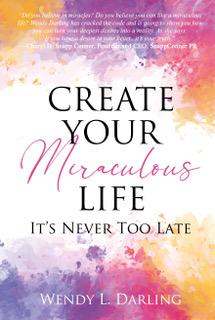
 Authors and Artists4 years ago
Authors and Artists4 years agoCreate Your Miraculous Life: It’s Never Too Late Wendy L. Darling
-

 People's Choice4 months ago
People's Choice4 months agoBollywood in August 2025: A Landscape of Sequels, Social Commentary, and Star Power

